Knife, Fighting Utility. That’s what the U.S. Marine Corps lists as the knife they adopted for issue in 1942 when soldiers demanded a replacement that would hold up to the rigors of more than just battle. The previous version was an excellent fighting knife, but wasn’t good for much else. Soldiers began carrying civilian models until the official versions caught up to their standard of use. The Fighting/Utility knife, sometimes called the “USMC KA-BAR”, has been in place ever since 1942 for the U.S. Marine Corps, and has also been issued to U.S. Navy and U.S. Army soldiers.
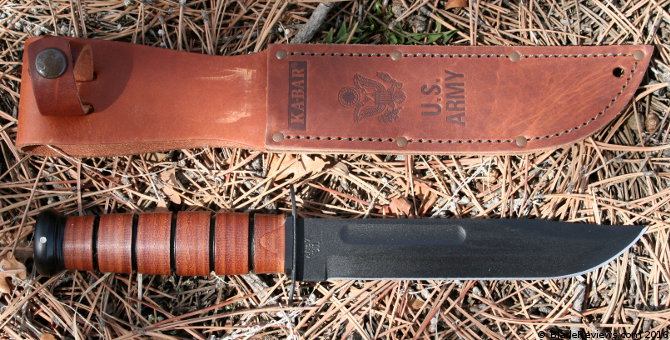
Buy the Ka-Bar USMC at BladeHQ
While some thought that a multi-use knife would not be ideal for fighting, soldiers reported differently when returning from combat over the years from WWII and Vietnam through Afghanistan and Iraq. It’s hard to argue with that kind of deployment longevity and I have a soft spot for military issued equipment that comes as a result of listening to the troops in the field.
The story behind the KA-BAR name is also hard to ignore. A fur trapper sent the owner of Union Cutlery a letter where he detailed using one of their knives to kill a wounded bear when his rifled jammed. The letter was not completely legible and “k a b ar” were the only letters they could make out from the phrase “kill a bear”. The bear story and their adoption of the name as a result is now printed and sent along with knives from the factory. KA-BAR is now also proudly stamped on one side of the blade right over Olean, N.Y. opposite whatever branch you choose to support.
I hope to never have to take down a bear, but I’ve used mine for virtually every camping task and it has performed exceptionally well. Dead branches still hanging in the forest can take a toll on an edge. I’ve been pleasantly surprised with the durability of my knife after using it to clean up older trees and to gather dry timber for firewood.
General Dimensions and Blade Details
The standard (or “full size”) version of the Fighting/Utility Knife has an overall length of 11.875 inches, a 7-inch blade, and weighs 11.2 ounces. The Fighting/Utility knife is made in the USA. KA-BAR makes a shorter version with a 5.25-inch blade that I also picked up thinking it would be perfect for me. Unfortunately, the shorter blade option is coupled with a smaller handle, and I actually prefer the full-sized knife due to its larger and more comfortable handle.
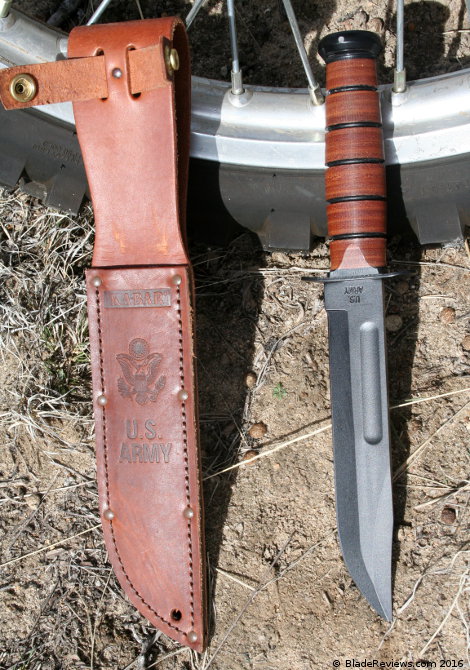
The black coated, flat ground blade comes to a bowie style clip point and is made out of 1095 Cro-Van steel. The chromium and vanadium add both resistance to elements and edge retention over plain 1095. Plain and serrated edges are available based on your preference. Edge retention and ease of sharpening usually have an inverse relationship, but they’ve done a nice job of walking that tightrope here. 1095 Cro-Van takes slightly more effort to sharpen over regular 1095, but is worth that tradeoff for an edge you can count on in the wild.
There is also a 2.5 inch fuller built into the spine side of the blade to keep weight down to what feels lighter than 11.2 ounces. Blade thickness comes in at a perfect .17 inches for the intended use. It’s strong enough to baton firewood, open ammo cans and cut wire without adding weight to a soldier that needs to be mobile to stay alive.
Originally the swedge of the blade was shipped out sharpened from the factory, but double edged knives are frowned upon in some states and that practice was eventually put to a halt.
Pommel, Crossguard, and Handle
The full tang of the knife is visible as it protrudes through the pommel where it is securely pinned into place with a stainless steel pin you can see from one side. The pommel itself is steel and appears ready and able to withstand a reasonable pounding.
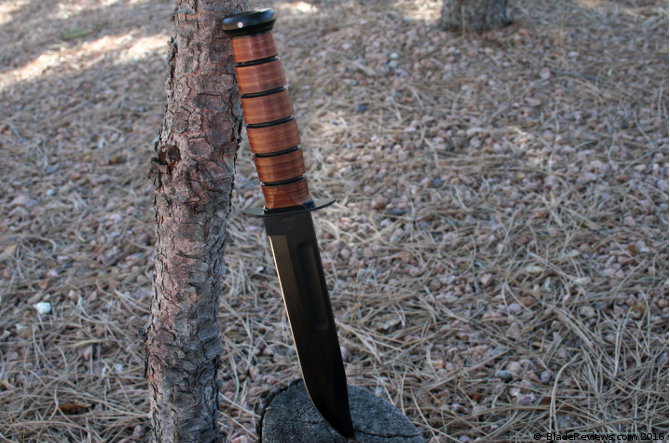
On the blade end of the handle a slightly curved crossguard lightly protects the hand from danger. It doesn’t cover my full knuckle, but it does offer the end user some protection. Plus making it larger would have been a nightmare in the sheath.
You have options for the handle that rests between the pommel and crossguard. The oval shape of the handle is 1 inch by 1.25 inches in circumference and tapers slightly at top and bottom so the meat of your grip is full. While leather washers are the traditional material, and I personally think make the knife “pop”, another option is the version in grippy Kraton. Kraton is far superior in regards to both resisting the elements and staying in your hand. The leather is purely beauty over function for me, but it will weather over time and that in combination with oils from your hand will generally result in a better grip than a factory new knife. The good stuff just gets better with age, right?
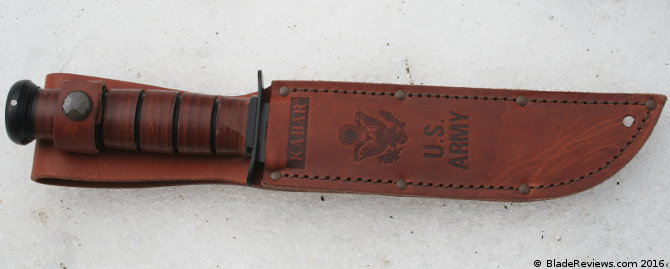
Ergonomics and Sheath
There’s something about a stacked leather handle. Like that pair of jeans that fits better every time you break them out, you just have to appreciate the things in life that get better with age. I wasn’t sure how I’d feel about the uniformly cut notches that may line up with your fingers. It turns out the notches enhance the grip and provide cooling channels that are handy when performing field work. The length of the handle suits a blade of this length nicely, and the knife feels balanced and capable in hand.
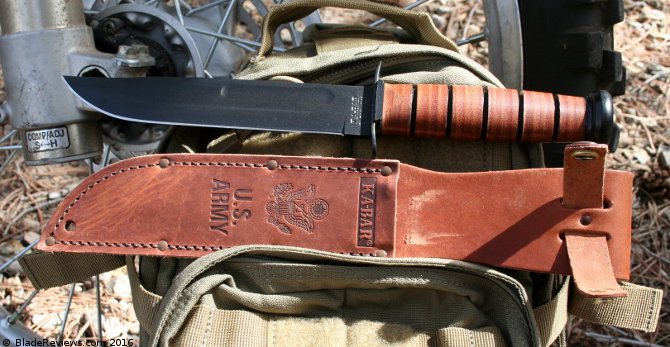
When handling the knife you will notice that the 7-inch blade feels surprisingly light and easy to wield. This is the result of two things. First, the blade is just under 1.25 inches wide and is slightly offset when looking at it compared to the handle. The result is a counter effect to the lighter, tapered blade edge versus the heavier spine. While I haven’t come across anything outright from KA-BAR saying this was intentional, I have to believe it is. This offset isn’t built into the smaller 5.25-inch version, but was easily identified on every picture I pulled up while searching full-sized versions online. Second, the balance point between the blade and handle favors the handle somewhat. This makes accomplishing fine tasks more manageable than comparable knives with longer blades.
Sheaths are available that generally match your choice of handle material. The version with the stacked leather handle comes with a leather sheath. The leather sheath can come stamped with your chosen branch of service. The KA-BAR logo includes “U.S.A” if you opt out of the military service versions. Plastic sheaths are standard for those that choose the Kraton handled version. For use in saltwater or very humid regions, the plastic/Kraton version is the obvious choice. Both sheaths are well made and pair amiably with the knife from both a functional and aesthetic standpoint.
The knives I own both came with leather sheaths. The leather is of high quality and the stitching is excellent. I assume the plastic versions are made to the same high standards.
KA-BAR USMC Fighting/Utility Knife Review – Final Thoughts
Finding a more historically rich knife that has proven itself times over and is still in production today (at a VERY reasonable price) would be a challenge.
The KA-BAR Fighting/Utility line boasts a variety of options that will suit the vast majority of users. I’ll be first in line if they come out with a hybrid between the full-sized 7-inch version and the shorter 5.25-inch one. With all the variety in Ka-Bar’s lineup, I still would prefer the blade to be about an inch shorter. I’m pretty sure I’ll be happy to have their standard 7″ version by my side if I ever do run across that legendary wounded bear in the woods. That extra blade length also comes in handy when using the knife to baton firewood. Quibbles about size aside, the fit and finish of my knife is outstanding, and the construction is clearly built to take a lifetime of punishment.
If you are looking for an all-purpose outdoor adventure knife the KA-BAR Fighting Utility knife is one of my top picks in the value category. It’s just a solid all-round knife. Plus, you get to hold in your hand a functional piece of history that helped win World War II and other engagements. I have a couple children to pass this knife on to, and I’ll have to make sure the kid I don’t pass this one down to gets something amazing to compensate. Then again, at this price you can afford to buy one for each kid.
- The traditional KA-BAR marked for Army personnel
- Blade features U.S. ARMY tang stamp
- Leather sheath included
- Made in the USA
I recommend purchasing the KA-BAR Fighting/Utility Knife at Amazon or BladeHQ. Please consider that purchasing anything through any of the links on this website helps support BladeReviews.com, and keeps the site going. As always, any and all support is greatly appreciated. Thank you very much.
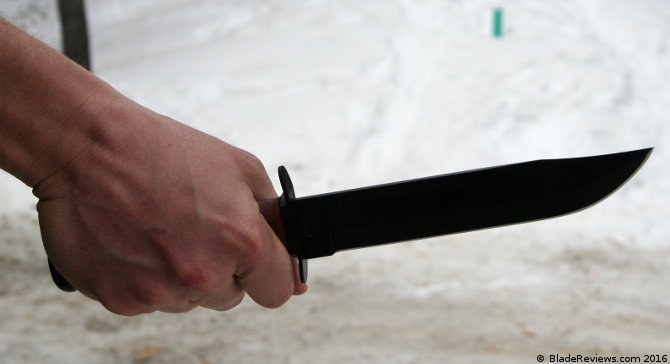

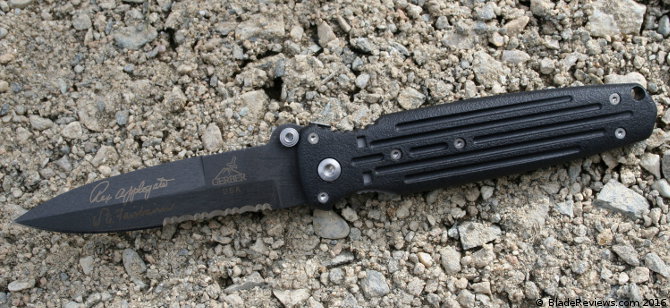
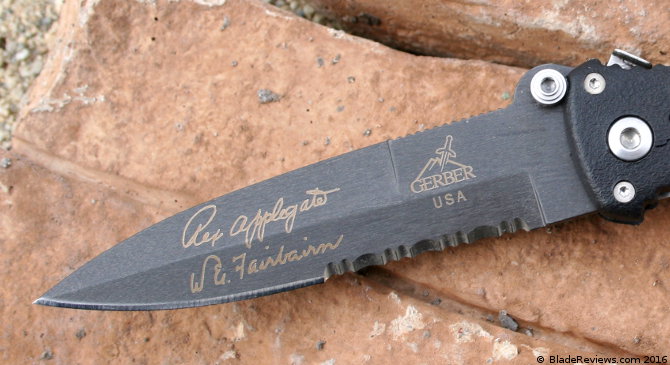
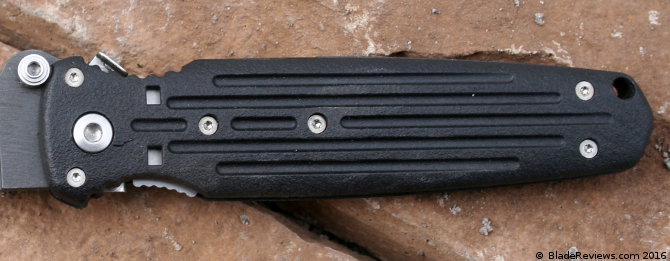
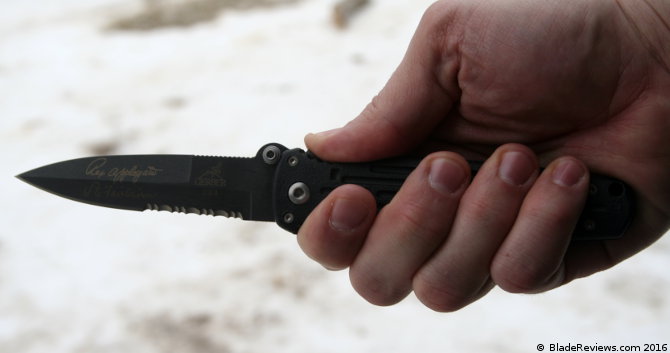
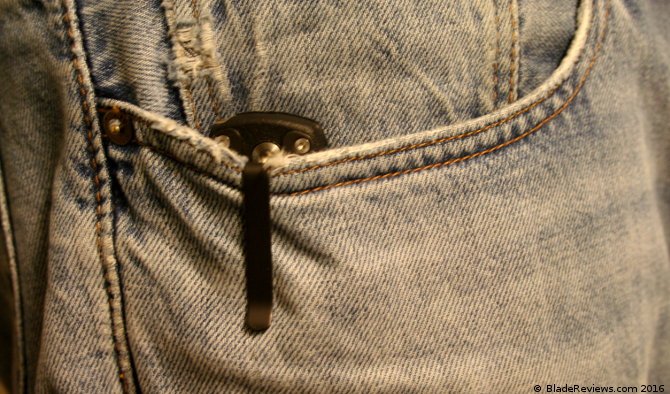
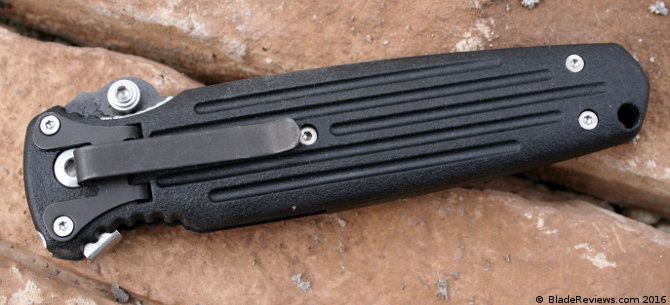
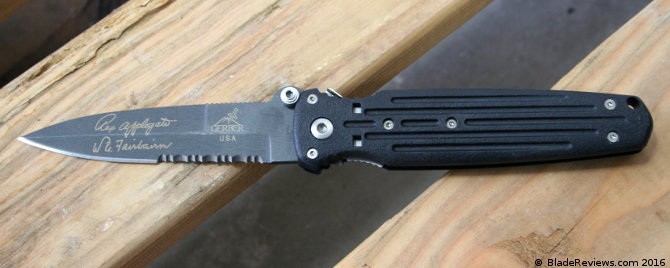
![Gerber Applegate Covert Knife, Serrated Edge, Black, 154CM [05786]](https://m.media-amazon.com/images/I/41yLxkUsrdL._SL160_.jpg)